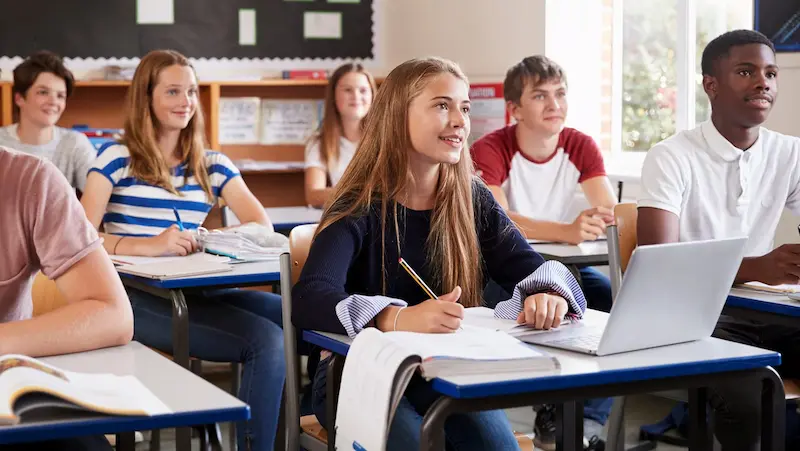Secondary education serves as a pivotal stage in a student’s academic journey, bridging the gap between primary education and higher education or vocational training. This phase is not merely a continuation of primary schooling but a critical period where students consolidate their knowledge, develop critical thinking skills, and prepare for the responsibilities of adulthood.

The Structure of Secondary Education
The structure of secondary education varies globally, reflecting cultural, economic, and societal differences. Despite these variations, the core objective remains consistent: to provide students with the skills and knowledge necessary for their future endeavors, whether academic or vocational.
Lower and Upper Secondary Education
Secondary education is often divided into two distinct phases: lower secondary education and upper secondary education. Lower secondary education typically includes students aged 12 to 15 years and focuses on a broad curriculum that builds on the foundation laid during primary education. Subjects such as mathematics, science, language arts, and social studies are emphasized, with a growing emphasis on developing critical thinking and analytical skills.
Upper secondary education, which usually encompasses students aged 15 to 18 years, allows for more specialization. During this phase, students often have the opportunity to choose subjects that align with their interests and future career aspirations. This period is crucial for students as they prepare for higher education, vocational training, or entry into the workforce. The curriculum in upper secondary education is designed to be more rigorous and is often tailored to meet the requirements of national or international examinations.
The Role of Secondary Education in Personal Development
Beyond academic instruction, secondary education plays a significant role in the personal and social development of young individuals. It is a time when students begin to form their identities, explore their interests, and develop the soft skills necessary for adult life.
Fostering Critical Thinking and Problem-Solving Skills
One of the primary goals of secondary education is to cultivate critical thinking and problem-solving skills. Unlike the rote learning that often characterizes primary education, secondary education encourages students to question, analyze, and synthesize information. This is particularly evident in subjects such as science, where students are encouraged to conduct experiments, test hypotheses, and draw conclusions based on empirical evidence.
Social and Emotional Learning
Social and emotional learning (SEL) is another essential component of secondary education. As students navigate the challenges of adolescence, SEL programs help them develop emotional intelligence, empathy, and interpersonal skills. These programs are designed to equip students with the tools they need to manage their emotions, build healthy relationships, and make responsible decisions.
The Challenges Facing Secondary Education
Despite its importance, secondary education faces numerous challenges that can impede its effectiveness. These challenges vary depending on geographic location, economic conditions, and the specific needs of the student population.
Access and Equity
Access to secondary education remains a significant issue, particularly in developing countries. Economic barriers, cultural norms, and geographic isolation can prevent students from continuing their education beyond the primary level. Additionally, even in regions where secondary education is accessible, disparities in the quality of education can lead to inequitable outcomes. For example, schools in urban areas may have more resources and qualified teachers than those in rural regions, resulting in a gap in educational attainment.
Curriculum Relevance
Another challenge is ensuring that the curriculum remains relevant to the needs of students and society. In many educational systems, the curriculum can be outdated, failing to keep pace with the rapidly changing demands of the modern world. There is a growing need for curricula that integrate digital literacy, critical thinking, and global awareness, preparing students for the complexities of the 21st century.
The Future of Secondary Education
As the world continues to evolve, so too must secondary education. The future of secondary education will likely be shaped by advances in technology, changes in the global economy, and the ongoing need to address social inequalities.
Integration of Technology
Technology is poised to play an increasingly significant role in secondary education. From online learning platforms to artificial intelligence-driven personalized learning, technology has the potential to transform the way students learn and interact with educational content. However, this shift also presents challenges, such as ensuring equitable access to technology and maintaining the human element of education.
Preparing Students for a Globalized World
In an increasingly interconnected world, secondary education must prepare students to be global citizens. This includes fostering an understanding of different cultures, promoting multilingualism, and encouraging collaboration across borders. Additionally, students must be equipped with the skills needed to thrive in a global economy, such as adaptability, creativity, and the ability to work in diverse teams.
Conclusion: The Imperative of Evolving Secondary Education
Secondary education is a critical phase in a student’s life, laying the foundation for future success. It is a time of intellectual growth, personal development, and preparation for the challenges of adulthood. However, to meet the needs of today’s students and tomorrow’s world, secondary education must continue to evolve, addressing the challenges of access, equity, and relevance while embracing the opportunities presented by technology and globalization. By doing so, it can fulfill its promise of empowering the next generation with the knowledge, skills, and values they need to thrive.